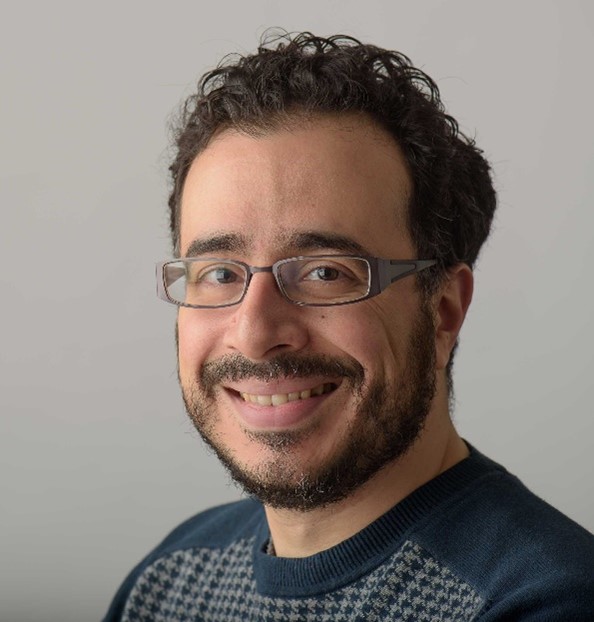Dr John J Reynolds
Supervisor Details
Research Interests
- Understand the cellular pathways that detect and repair DNA damage and protect DNA replication.
- Investigate why mutations in DNA repair genes cause human disease.
- Develop better therapy strategies to treat human diseases linked to genome instability, such as cancer.
Project Details
Dr Reynolds is the primary supervisor on the below project:
Using neuronal cell models to investigate the impact of DNA repair deficiencies on the central nervous system
Secondary Supervisor(s): Dr Mariaelena Repici
University of Registration: Aston University
BBSRC Research Themes: Understanding the Rules of Life (Neuroscience and Behaviour)
Apply here!
Deadline: 23 May, 2024
Project Outline
The human central nervous system (CNS) is remarkably complex and neurons need to remain functional for decades. Neurodegeneration occurs when the progressive loss of neuronal structure and function results in increasing neuronal cell death. Whilst the most common risk factor for developing neurodegeneration is age, there is a diverse group of neurodegenerative diseases that manifest mostly in children and young adults (for example ‘ataxia oculomotor apraxia’, ‘spinocerebellar axonal neuropathy’ and ‘amyotrophic lateral sclerosis’). A common cause of these diseases is the inheritance of mutations in genes that function to repair DNA damage, providing a strong link between neurodegeneration and DNA repair. Our genome is under constant attack from endogenous and environmental DNA damaging agents, and without the cellular pathways that detect, signal and repair DNA damage, cells would rapidly cease to function.
This project focuses on neurodegenerative disease characterised by limb weakness, muscle wastage and degeneration of motor neurons in the CNS. Several of the genes found to be mutated in patients have been reported to have critical roles in promoting DNA repair. However, despite decades of research it is still unknown why neurons in the CNS seem to be particularly sensitive to the loss of DNA repair pathways, and a particular challenge is the inability to obtain disease affected tissue from patients. The recent development of techniques to generate physiologically relevant neuronal disease models via the use of patient-derived induced pluripotent stem cells (iPSCs) has therefore proved revolutionary to human neurodegenerative disease research.
This project aims to investigate the role that DNA double strand break repair plays in promoting neuronal health and function using a variety of human neuronal models.
Aim 1: Establish neuronal models using immortalised neuroblastoma SH-SY5Y cell lines. CRISPR-Cas9 will be used to generate SH-SY5Y cell lines in which disease-associated genes are knocked out, or in which patient mutations are introduced. These cell lines will be differentiated into a more mature neuron-like phenotype. The ability of these cells to repair physiologically relevant types of DNA damage will then be measured using a variety of assays, including immunofluorescence for markers of DNA damage, immunoblotting, metaphase spread analysis and comet assay.
Aim 2: Investigate the cellular consequences of elevated levels of unrepaired DNA damage persisting in differentiated SH-SY5Y cells. Following the induction of DNA damage in wild-type and mutant SH-SY5Y cells, we will investigate:
- Levels of apoptosis
- RNA transcription of critical neuronal maintenance genes
- The formation and composition of stress granules
Aim 3: Generate multiple central nervous system cell types from iPSCs carrying neurodegenerative disease associated mutations to study the effects of these mutations on astrocytes (the most abundant cell type in the central nervous system), motor neurons (which are predominantly affected in amyotrophic lateral sclerosis), and cortical neurons (which are affected in many dementias). These different cells will be first characterised to ensure they possess the appropriate markers and cellular morphologies, and their ability to respond to and repair DNA damage will be measured.
In summary, this PhD project will use cutting edge cell models to gain a fuller understanding of why the repair of DNA damage is critical for the health of the human central nervous system, and attempt to answer some important questions, such as why are neuronal types affected differently in different neurodegenerative diseases?
References
Konopka & Atkin (2022). DNA Damage, Defective DNA Repair, and Neurodegeneration in Amyotrophic Lateral Sclerosis. Front Aging Neurosci.
Provasek, et al, (2022). DNA Double-Strand Breaks as Pathogenic Lesions in Neurological Disorders. Int. J. Mol. Sci.
Techniques
- Cell culture
- Culture of neuroblastoma and iPSCs cells
- Differentiation of iPSCs into different neuronal cell types
- DNA damage/repair assays
- Comet assays
- Immunofluorescent and brightfield microscopy
- Apoptotic cell death assays
- Chromosome analysis
- Molecular biology/biochemistry
- Molecular cloning and site-directed mutagenesis
- Protein co-immunoprecipitation and western blotting
- qPCR/RT-PCR
- CRISPR-Cas9
- Computational techniques
- RNA-Seq analysis
- Gene enrichment and pathway mapping
